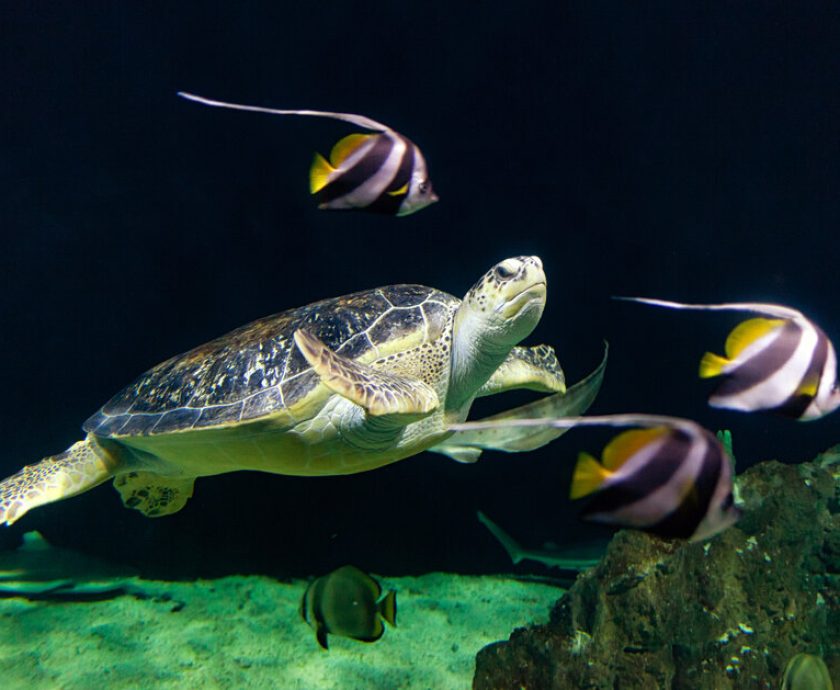In the context of sea turtle conservation, one of the oldest and most vulnerable species on our planet, satellite technology has emerged as a revolutionary tool. These devices not only help scientists better understand sea turtles’ migration patterns and behavior but also facilitate the implementation of more effective conservation strategies. In this article, we will explore how satellites are transforming the way we protect these iconic creatures.
Table of Contents
The Importance of Satellite Monitoring
Satellite monitoring is crucial for understanding the movements and behavior patterns of sea turtles, especially during the so-called “lost years,” a period when young turtles disappear from scientists’ view after hatching and before reaching maturity.
The Case of Donna Shello
A notable example is Donna Shello, an adult leatherback sea turtle who participated in the “Tour de Turtles,” a competition organized by the Sea Turtle Conservancy (STC) to track these turtles’ migrations. With a satellite transmitter on her back, Donna Shello has traveled over 5,574 kilometers, providing valuable data on her migration routes and foraging habitats.
Reducing Bycatch and Protecting Habitats
Sea turtle conservation faces multiple challenges, including bycatch in fishing nets and habitat destruction.
International Collaborations
Projects like the U.S.-Mexico-Canada Agreement Sea Turtle Bycatch Reduction Project work to reduce bycatch in gillnets and longlines, promoting sustainable fishing practices. These collaborations involve local communities and fishermen to develop joint solutions, such as creating turtle-friendly nets that reduce incidental catch.
Protecting Nesting Beaches
Protecting nesting beaches is essential for the life cycle of sea turtles. Restoring these habitats, including improving dune structure and reducing artificial lighting, is crucial for increasing productivity in these areas. The National Fish and Wildlife Foundation (NFWF) supports projects that restore and protect these beaches, ensuring a safe environment for turtles to nest.
Current Threats and Conservation Strategies
Sea turtles face numerous threats, from plastic pollution to climate change.
Plastic Pollution
Ingestion of plastic waste is a significant threat to sea turtles. These creatures often mistake plastic for their natural food, which can cause internal damage or blockages. Education and awareness programs are fundamental in reducing the amount of plastic in the ocean and protecting these species.
Climate Change
Climate change directly affects sea turtle habitats, including coral reef destruction and erosion of nesting beaches. Implementing responsible coastal development practices and creating marine protected areas (MPAs) are key strategies to mitigate these impacts.
Using Satellites to Identify Migration Routes
Satellite technology has significantly improved over the past decade, allowing scientists to track sea turtles’ migration routes with greater precision.
Advances in Satellite Telemetry
Satellite telemetry has been one of the most effective tools in sea turtle conservation. More robust and reliable devices have enabled the collection of extensive data on migration routes and foraging habitats. This data is essential for informing conservation policies and protecting critical areas for the survival of these species.
Rescue and Rehabilitation Networks
Collaboration between organizations and communities is crucial for rescuing and rehabilitating sea turtles.
Stranding and Salvage Network
The Sea Turtle Stranding and Salvage Network is a cooperative effort involving federal, state, and private partners. This network collects data on stranded turtles, documents injuries and abnormalities, and transports sick or injured turtles to rehabilitation centers. Public education is an integral part of this effort, highlighting the importance of conservation and responsible behavior when interacting with sea turtles.
Final Reflections
Satellite technology has revolutionized the way we protect sea turtles. By providing precise data on their migration routes, foraging habitats, and behavior patterns, satellites help scientists and conservationists implement more effective conservation strategies.In summary, sea turtle conservation in the era of satellite technology requires a multifaceted strategy that includes reducing bycatch, protecting habitats, educating about plastic pollution, mitigating climate change, and collaborating in rescue and rehabilitation networks. By prioritizing these strategies and leveraging satellite technology, we can ensure a safer future for these iconic and ancient navigators of our oceans. Satellite technology is not just a tool but a hope for sea turtle conservation.
Additional Resources
For those interested in learning more about sea turtle conservation and how to get involved:
- Sea Turtle Conservancy (STC): A leading organization in sea turtle conservation, offering resources on how to help protect these creatures.
- National Oceanic and Atmospheric Administration (NOAA): Provides extensive information on sea turtle conservation efforts, including research and protection programs.
- World Wildlife Fund (WWF): Offers insights into global sea turtle conservation initiatives and ways to support them.
By supporting these organizations and staying informed about the latest developments in sea turtle conservation, we can all play a role in protecting these incredible animals.
For the most current information, explore our homepage to learn about our mission, initiatives, and how you can get involved in sea turtle conservation!











